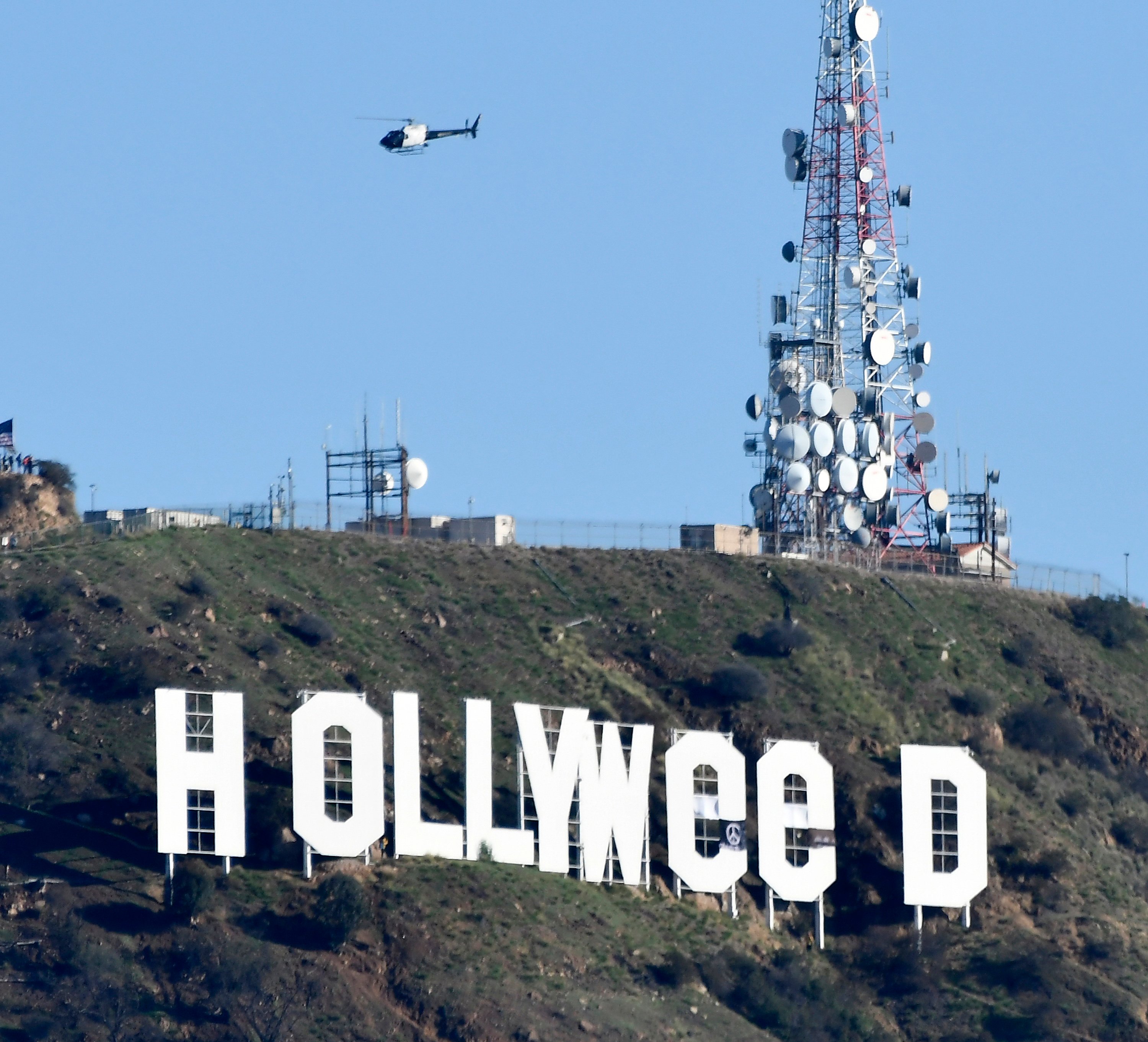
As a new year dawned this week, one of the country’s most iconic landmarks found itself the subject of a cheeky prank. For a brief, shining moment, Los Angeles’s famed Hollywood sign, perched above the city atop Mount Lee, read instead “Hollyweed.” Guess what? The intervention was the handiwork of artist and videographer Zach Fernandez and his ex-wife, Sara Fern, according to Buzzfeed.
The stunt is not without historical precedent: On New Year’s Day 1976, Daniel Finegood, an art student at California State University, Northridge, armed with $50 worth of curtains, did the same, in honor of the January 1 adoption of a drug law under which possession of small amounts of marijuana was a misdemeanor, not a felony. Marijuana was legalized in California under Proposition 64, which passed in November 2016.
Finegood went on to stage three other Hollywood sign interventions over the years. He died in 2007 from multiple myeloma, as reported by the Los Angeles Times.
Fernandez told Buzzfeed that he spotted a photo of Finegood’s handiwork two weeks ago, and was immediately inspired. “I thought, what the fuck, is this thing real?” he said. He spent about $35 on fabric to cover parts of the 45-foot-tall letters, writing “A tribute to Mr. Finegood” and “JesusHands,” his Instagram handle, on the back of the sheets.
The prank was carried out in the hopes of cheering people up, to “just lift their spirits and let them live because 2016 was a crazy year, dude,” said Fernandez, who spent three hours installing the piece under cover of night. “It was so fun and exhilarating.”
According to Buzzfeed, police do not have any suspects in connection with the incident, and are investigating on charges of trespassing, but not vandalism, because the fabric was attached with clamps and easily removed.
Zach Fernandez and Sarah Fern. Courtesy of Zach Fernandez via Facebook.
When asked if he is worried about potential trouble with the police, Fernandez told VICE, “Sometimes in order to create that conversation, you have to be OK with the consequences. I’m very proactive about marijuana.”
Though “Hollyweed” might seem like a fairly immature joke, Finegood took the idea quite seriously: “An artist’s role throughout history has been to create representations of the culture he exists in. By hanging four relatively small pieces of fabric on the landmark, we were able to change people’s perception of the Hollywood Sign,” he wrote in a 1983 letter to the Times.